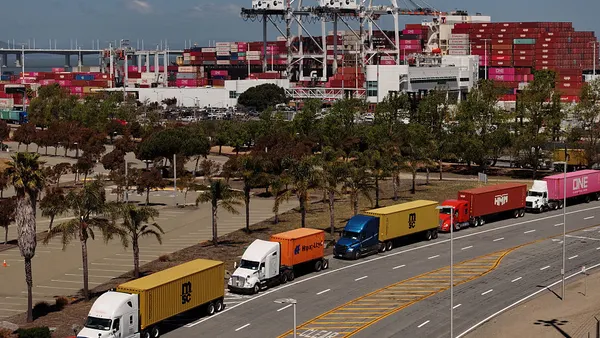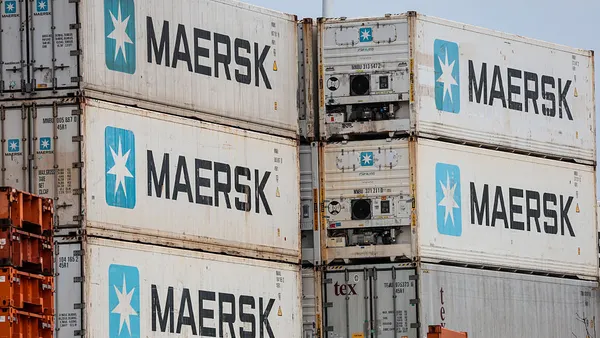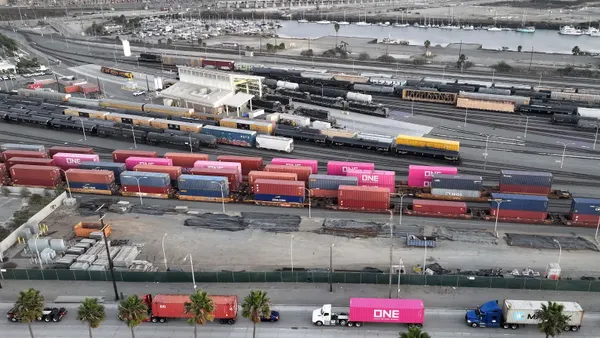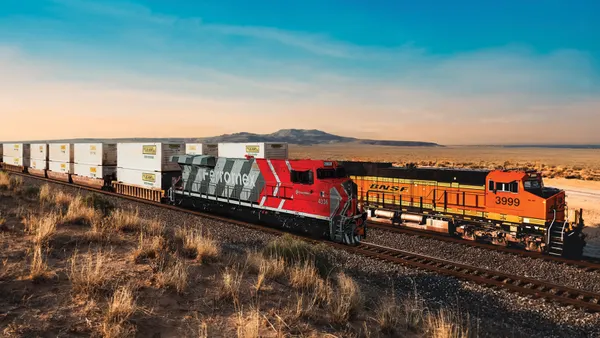Dive Brief:
- J.B. Hunt is upping its capital investment plan by 40% to incrementally buy containers, trailers, chassis and tractors, CEO John Roberts said on the company's earnings call Thursday.
- The carrier is set to buy 6,000 containers this year for its intermodal business, in addition to the 6,000 it already had planned, Roberts said. A little more than 1,000 of them will be temperature controlled. And J.B. Hunt now plans to add 3,000 trailers to its highway services business this year, up from 1,500.
- But more capacity begets the need for more drivers. "We estimate that the decrease of the driving school applicants and graduates, the Drug and Alcohol Clearinghouse and the impact presented by the pandemic combined have resulted in approximately 220,000 fewer drivers available to meet industry capacity needs," COO Nick Hobbs said on the call.
Dive Insight:
Shippers will likely face capacity struggles throughout 2021, "highlighted by a tight labor market, elevated cost to procure capacity and overall lack of supply chain fluidity," Chief Commercial Officer Shelley Simpson said.
J.B. Hunt is focused on cross selling with customers and helping them come up with better plans for peak season, Simpson said. Simpson said she expects restocking to continue throughout the year.
Inventory restocking has kept the trucking market hot, and demand is strong for intermodal services for highway conversion in the Eastern U.S., Executive Vice President of Intermodal Darren Field said on the call.
During Q1, J.B. Hunt "moved a disproportionate amount of spot shipments," compared to what it usually moves. Simpson referred to it as a "reverse environment" with more spot and lower published volumes. LTL volumes were down, but they were offset by higher TL volumes. The carrier also reported high contract and spot rates.
That helps build the business case for what Simpson referred to as a "record" equipment expansion.
J.B. Hunt is set to start receiving its new containers during Q2, and deliveries will continue through the rest of the year. Field said the company might take more deliveries in Q3 in anticipation of peak season. Many of the containers will head toward the West Coast first, where imports are overwhelming ports, Field said.
Multiple J.B. Hunt executives noted shippers have been slow to unload, which brings equipment velocity and availability down.
Injecting more equipment into the supply chain would help with capacity. The trailer shopping spree also enables growth in the 360box program, which is helping to move J.B. Hunt in an asset-light direction. As it avoids paying for tractors, the carrier can offer trailer services to third parties.
J.B. Hunt's growth and increasing demand for services make an existing problem more dire — the driver shortage.
The carrier has dealt with issues hiring drivers before, but this time around, it's "unusual," Roberts said. The shortage is worse than it has been in the past and will likely be prolonged, executives agreed.
"In my opinion, the industry is facing the most challenged driver market that I’ve seen in my 37-year career at J.B. Hunt," Hobbs said.
Focusing less on tractors and more on trailers would alleviate some of the need for drivers in the long term, but it wouldn't be a cure-all for market tightness. Roberts said he didn't think the thousands of additional J.B. Hunt containers would oversupply the market "in any way," and projected demand would still not be met.
This story was first published in our sister publication, Transport Dive. Sign up here.














